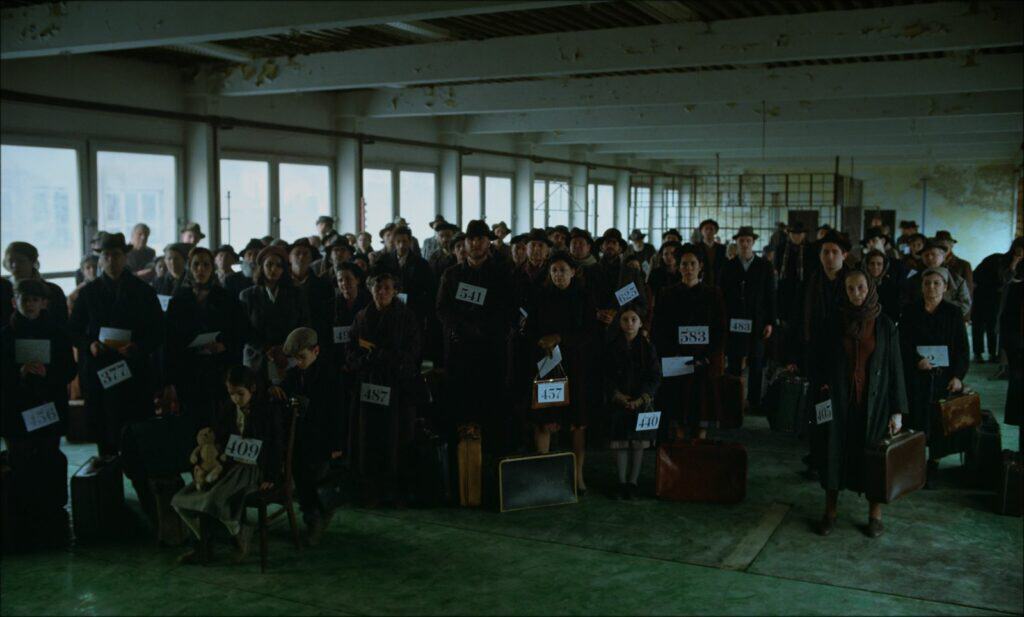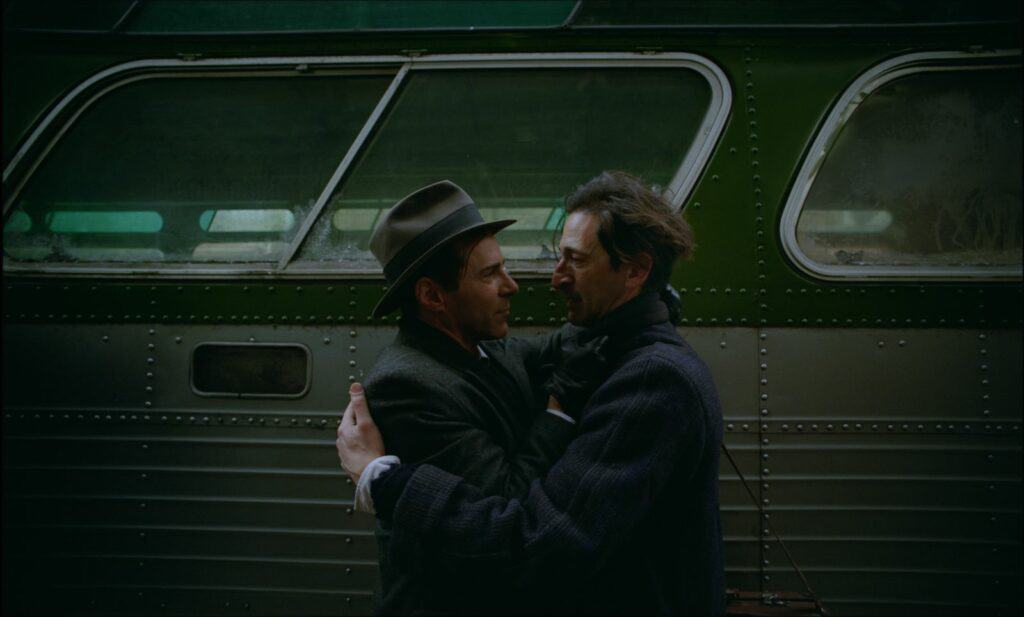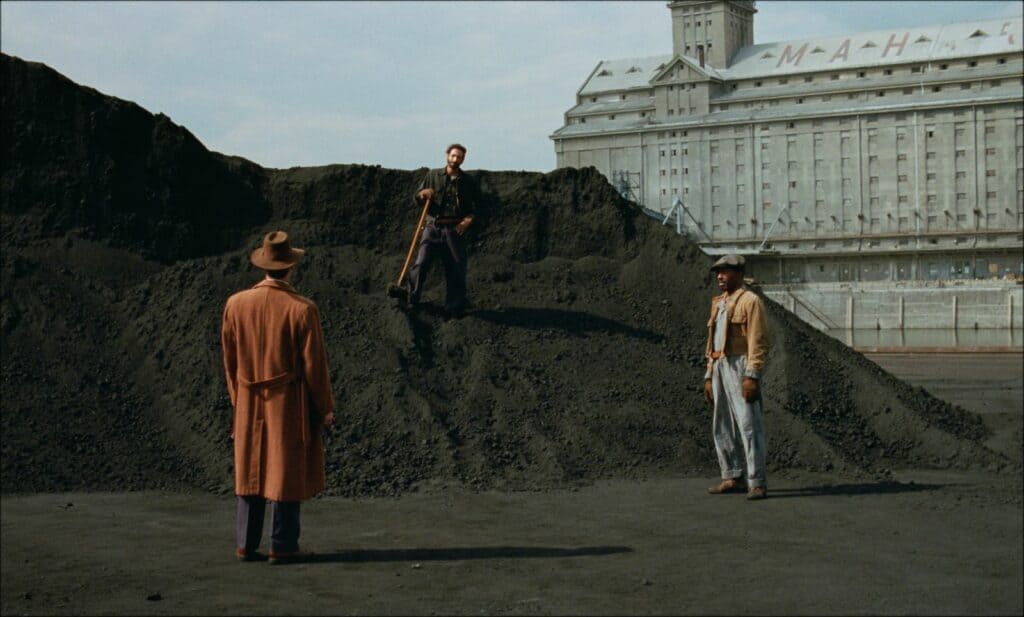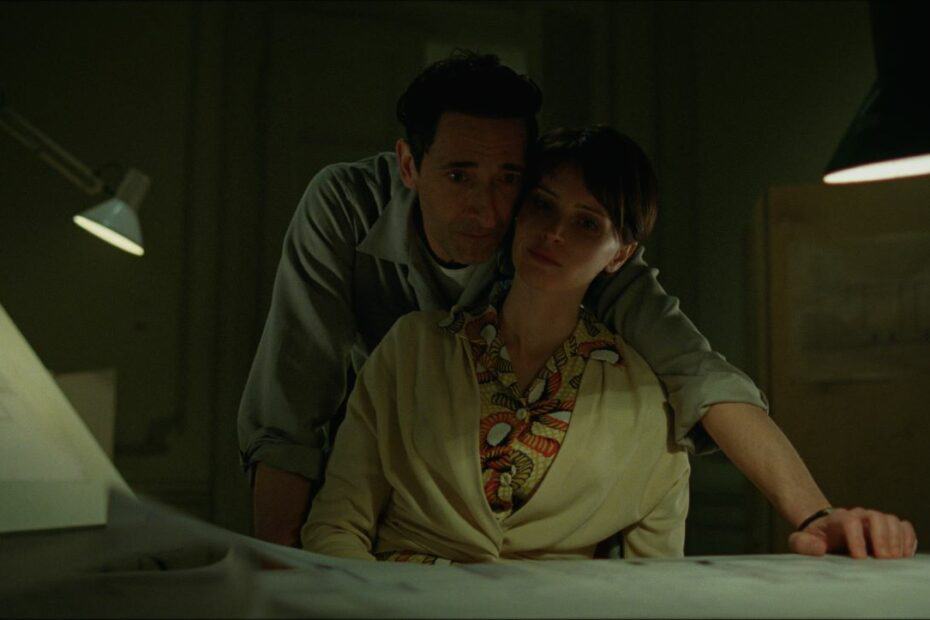The Brutalist is former actor Brady Corbet’s third feature, following The Childhood of a Leader (2015) and Vox Lux (2018), both presented at the Venice Film Festival. None of the two were successful films, but there were moments in the former that worked splendidly. His latest film comes with a certain buzz, and the word masterpiece has been thrown around by people who saw the film beforehand. The premiere was, once again, in Venice, and a big deal has been made that the screenings would be in 70mm. In my before-piece, I labelled the film the heaviest of the fest since the reels are said to weigh 136 Kg. The expectations from the press crowd in Sala Darsena were palpable.
The storyline (and in this film, it is by far the most essential part) concerns the journey of Hungarian-born Jewish architect László Tóth (Adrien Brody), who emigrated to the United States of America in 1947. Initially forced to toil in poverty, he soon wins a contract that will change the course of his life. The contract in question comes from a business tycoon, Harrison Lee Van Buren (Guy Pearce in a far-from-subtle performance). The assignment is to build a vast community centre. Lászlo got involved with Harrison in the first place because the latter’s son, Harry, asked him to redesign the father’s library as a surprise. However, Harrison didn’t like the surprise and fired László immediately.

The Director, The Brutalist?
Harrison’s impulsivity is underlined several times and with such broad brush strokes that absolutely nobody in the audience will miss it. Lo and behold, he suddenly loves the library’s new look and seeks out László toiling away in a coal plant to offer the aforementioned project. Meanwhile, László’s wife Erzsébet is stuck in Hungary, and during the whole first part of the film, he is waiting for her to join him. When I say “first part,” I mean it literally since the film is divided into an overture, two parts and an epilogue. I am highly averse to the term pretentious, but one can safely say that modesty is not the director’s main problem.
For instance, it would be possible to use this structure without labelling every part in writing as Corbet does once again.1 The Childhood of a Leader begins with an overture as well. To draw even more attention to the structure, Corbet decided to add a 15-minute intermission. The screen doesn’t go black; instead, a clock counts down towards the second act. This seems to be the year of gimmicks. In Megalopolis, a person stood before the screen asking Adam Driver a question. Something that urged several critics to whip up their phones to document the wonder. During this screening, some audience members started counting down the last seconds. Possibly, the future will give us singalong press screenings; who knows?

The overture begins in a dark, confined space where we hear Hungarian voices. The film was shot in Hungary and Italy, and Hungarian talent in the film was plentiful, including editor Dávid Jancsó and Ádám Fillenz (Pál Adrienn 2010) on second unit cinematography. The way the sequence continues and concludes made me think of Evolution by Kornél Mundruczó. 2Mundruczó’s company, Proton Cinema, is one of the film’s co-producers. That thought ran in my mind throughout the film, especially when it becomes abundantly clear what the commissioned project represents to László. Inevitably, my reaction to a later reveal was thus dampened. Once the overture is over, the narrative begins in a work where the storytelling subjugates all the other elements.
This is my prime concern about The Brutalist. While the aforementioned Megalopolis labelled itself a fable while being nothing more than a mess, this film is an archaic form of epic saga that one rarely sees anymore. Maybe Kevin Costner was going for something similar in his Horizon project in several chapters. It is closer to Gone With the Wind (1939) and Casablanca (1942) than to European films, but simultaneously drawn out and not very compelling. That is especially true of the first part. All the separate elements of the films are well executed, but the whole thing feels like a well-made TV series with a hefty budget.
During the intermission, I shrugged my shoulders to a friend sitting behind me asking what we just witnessed, and the answer was, “He is building towards something”. I forgot to ask if it was a pun since the main character is an architect. It would not be unreasonable to draw parallels between certain aspects of the director and his main character. By the way, it should be noted that Lászlo Tóth is a fictional character and should not be confused with the individual who vandalised Michelangelo’s Pietà in 1972. The second part is stronger, not least when the story moves to Italy, which not only adds magnificent landscapes but a more cinematic approach that doesn’t constantly yield to the narrative.

When Brady Corbet addressed the film’s length, he said, “I’ve read great novellas. I’ve read great, you know, multi-volume masterpieces. And you know, for me, it’s just about how much story there is to tell. Maybe the next thing we’ll do will be 45 minutes.” All the “you know” aside, the references to novellas are suitable for this project, which often feels like a highly academic exercise, just like his first feature did. There are certainly much worse examples of this tendency in a film festival landscape where mainstream qualities seem to be the norm and arthouse films are few and far between.
The film is shot in VistaVision, a format that has been deemed obsolete for some time. The last American film shot in the format was One-Eyed Jacks in 1961. Still, the system has been used in special-effect shots in the first Star Wars and other films. It seems that Paul Thomas Anderson’s next project will also be made in VistaVision. The choice affirms Corbet’s affinity for old-style films and methods. The main problem for me is that The Brutalist feels like a museum piece in contrast to other films with prominent narratives, such as Barry Lyndon (1975), which I’ve seen countless times in cinemas. I could not imagine myself rewatching The Brutalist.
The acting ranges from good from Brody and Felicity Jones (including excellent Hungarian that intimidated me) to overblown (Guy Pearce). The technical level is never less than competent, which compels me to quote Stanley in Josephine Decker’s Shirley. When asked if someone’s dissertation was that bad, he answers, “You know how insulted I am by mediocrity. If it was awful, that would have been exciting but terrifically competent. There’s no excuse for that.” That sums up my feelings for The Brutalist perfectly. The hyperbolic reviews come with the festival territory, and it is telling that they are bestowed on a film that doesn’t demand any intellectual endeavour from its spectator but rather to lean back and be entertained.
A rewatch at the 2024 Black Nights Film Festival didn’t change much.
Originally published on 2/9, 2024.
